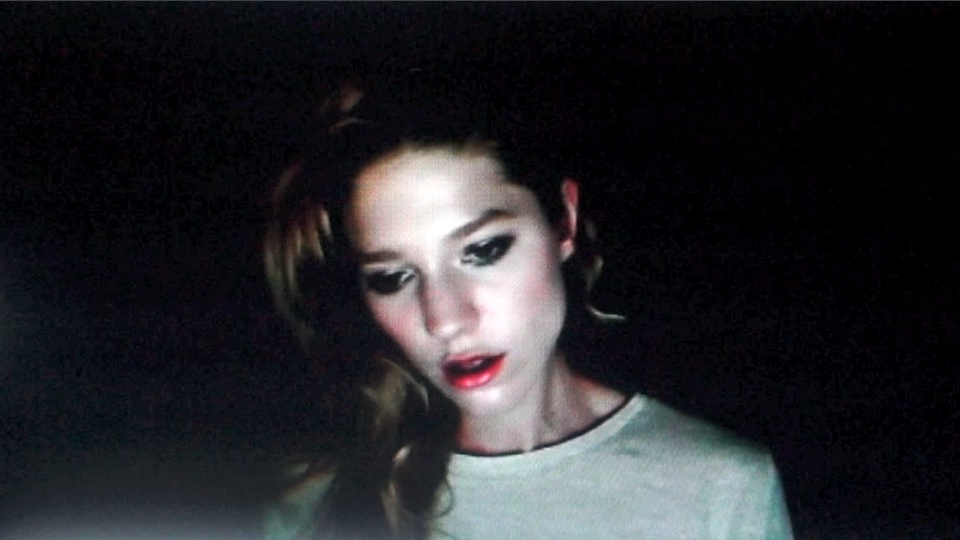Law & Politics
Does Ex-Dealer Elda Oreto Fantasize About Killing Petra Cortright?
"If @petcortright and I end up dead it was our ex gallerist who did it."

"If @petcortright and I end up dead it was our ex gallerist who did it."

Maxwell Williams


In a new art world novella, The Secret Lodge, Alice, the owner of a failing Berlin gallery murders in cold blood. Whether she’s stabbing young artist Alex Marinko, who spurned her for a bigger gallery, or poisoning rival gallerist Mary Frye with oleander-laced coffee, Alice is expressing her frustrations with the art world; she’s pissed off, fed up, and ready to kill. When her blood lust is sated, she stores the bodies in shipping crates meant for sculptures.
It might be easy to write off this work of fiction by Elda Oreto, a former art dealer who ran Club Midnight in Berlin (see Berlin’s 10 Best Gallery Spaces), as nothing more than the product of a very active imagination. But the book, which was released on Amazon on February 14, has already drawn the attention of a few artists who are claiming on Twitter that the book borrows a tad too liberally from actual fact.
“Woke up to a novella written by an ex gallerist fantasizing about killing me,” wrote Petra Cortright on Twitter on February 16. Cortright, who currently has a show at Foxy Production in New York, was referring to the scene in which Alice bludgeons to death Dorothy Kaprow, a former Secret Lodge artist, after first callously comparing her art practice to prostitution. The fictional artist, who is a blond, ambitious video artist, is essentially a stand-in for Cortright, an artist known for her digital moving image work.
Cortright declined to comment for this story.
The Secret Lodge could be read as the Norway-based Oreto’s art world homicidal fantasy, a literary retribution for wrongs that caused her real world gallery, Club Midnight, to close—the gallery had been around for two years, during which time it represented artists including Petra Cortright, Santiago Taccetti, and Helga Wretman, before finally closing its doors in August 2013.
“In the book the gallerist stabs me again and again and again then undresses me and chops me up,” wrote artist Tiril Hasselknippe the day after she retweeted Cortright’s statement. “Which takes hours!”
Hasselknippe was referring to another artist character in the book who resembles her insofar as a reference to feminism in the artist’s work, as well as the identification of Hasselknippe’s ex-boyfriend and Berlin flatmate. Indeed before Alice gets to Cortright’s character, she first does away with that character along with another one who resembles artist Helga Wretman. “If @petcortright and I end up dead,” wrote Hasselknippe in another Tweet, “it was our ex gallerist who did it.”
We emailed Oreto to ask what she thinks about Cortright and Hasselknippe’s claims, and if the book is inspired by these real life artists. [For the record, the book does contain the boilerplate statement: “Any resemblance to actual persons, living or dead, or actual events is purely coincidental.”]
“In answer to your question,” Oreto wrote, “Absolutely NOT! The novel is a work of fiction. It’s a suspense / horror story that has nothing to do with reality. It has nothing to do with real people and real events in any way. The novel is completely detached from the reality.” Fair enough. It’s the privilege of fiction to to be immune from conflation with the author’s biography.
According to Oreto, the story is a tribute to Dario Argento’s giallo classic, The Bird with the Crystal Plumage, which is staged in an art gallery. The idea, she says, was to depict the twisted mind of a serial killer and the relationship between good and evil. Further inspiration came from an essay by Immanuel Kant, “On the Radical Evil in Human Nature” (1793).
The novella, which was self-published, is distractingly rough. There are typos on every page, and whole paragraphs that make little sense. Then there are a few moments of art world salaciousness—for example, when Alice pins Vanburen’s murder on an evil art flipper who contributed to her gallery’s demise—which cause knowing chuckles (see Is Stefan Simchowitz a Blessing or a Nightmare? and Christopher Glazek Annotates His NYT Stefan Simchowitz Story).
And for all its creepy crossover with the real world, some connections are somewhat delightful to stumble upon. The parallels of the character Gordon Vanburen to the real life Post-Internet artist Artie Vierkant are uncanny. Vanburen is described as a “net art ringleader” who shows “digitally manipulated pictures and some furniture by Ikea mounted in the wrong way, hanging from the ceiling.” Vierkant—who also shows digitally manipulated photographs and wrongly assembled Ikea—was another artist Oreto showed at Club Midnight in 2012.
Just before Alice poisons Vanburen at his crowded opening at another rival gallery, the omniscient narrator opines, “He wanted to reach the top of the art world and beyond and to do that it did not matter if he had to leave some people behind and walk on some others…. Now it was the moment for her to get some justice. Gordon Vanburen had to die.”
The Secret Lodge is available on Amazon for $20.62.
Check out more of artnet News’ book coverage in New, Priceless Dr. Seuss Children’s Book Found in Late Author’s Home and Jane Austen’s Unfinished Manuscript Gets Museum Show.